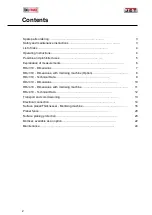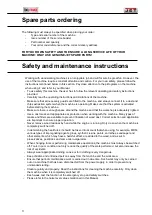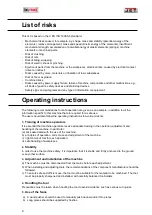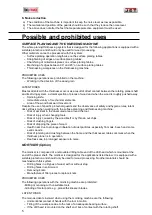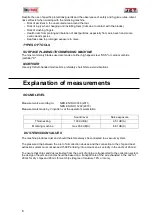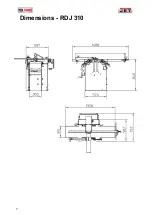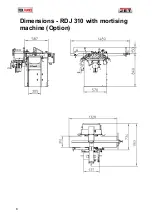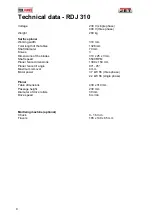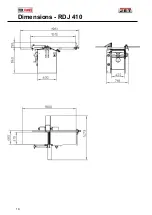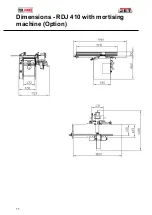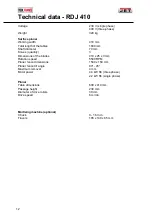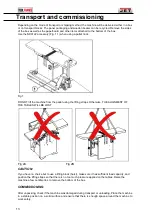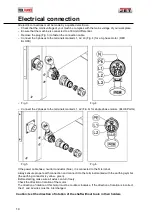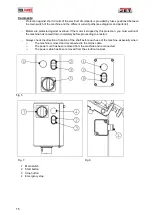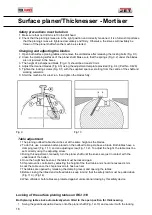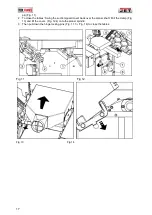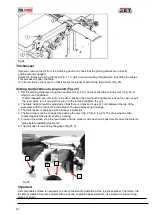
6
Despite the use of specific protections/guards and the observance of safety and hygiene rules, latent
risks still exist when working with the mortising machine.
– Risk of accident in the unsecured area around the tool.
– Risk of injury when changing and installing tools (Cuts due to contact with the blades).
– Risk of crushing fingers.
– Health risks from prolonged inhalation of dust particles, especially from oak, beech and some
exotic wood species.
– Deafness due to prolonged exposure to noise.
TYPES OF TOOLS
SURFACE PLANING/THCIKNESSING MACHINE
The most commonly blades used are made of either high speed steel "HSS" or calcium carbide
(carbide) "K".
MORTISER
Use only flat left-handed mortise bits, preferably short bits to avoid vibrations.
Explanation of measurements
SOUND LEVEL
Measurements according to:
NBN EN ISO 3746 (2011)
NBN EN ISO 11202 (2010)
Measurements made by: Vinçotte nv at the operator's workstation
Sound level
Noise exposure
Thicknessing
103.9 dB(A)
95.1 dB(A)
Mortising machine
max 93.8 dB(A)
88.1 dB(A)
DUST EMISSION VALUES
The machine produces dust and should therefore always be connected to a vacuum system.
The pressure drop between the inlet of all collection devices and the connection to the chip and dust
extraction system must not exceed 1500 Pa (taking into account an air velocity in the ducts of 20 m/s).
To ensure that chips and dust extracted from the point of origin are transported to the collection system,
the design of hoods and ducts should be based on a transport rate of the air exhausted in the duct of
20m/s for dry chips and 28m/s for wet chips (degree of moisture 18% or more).
Содержание RDJ 310-M
Страница 7: ...7 Dimensions RDJ 310 ...
Страница 8: ...8 Dimensions RDJ 310 with mortising machine Option ...
Страница 10: ...10 Dimensions RDJ 410 ...
Страница 11: ...11 Dimensions RDJ 410 with mortising machine Option ...


